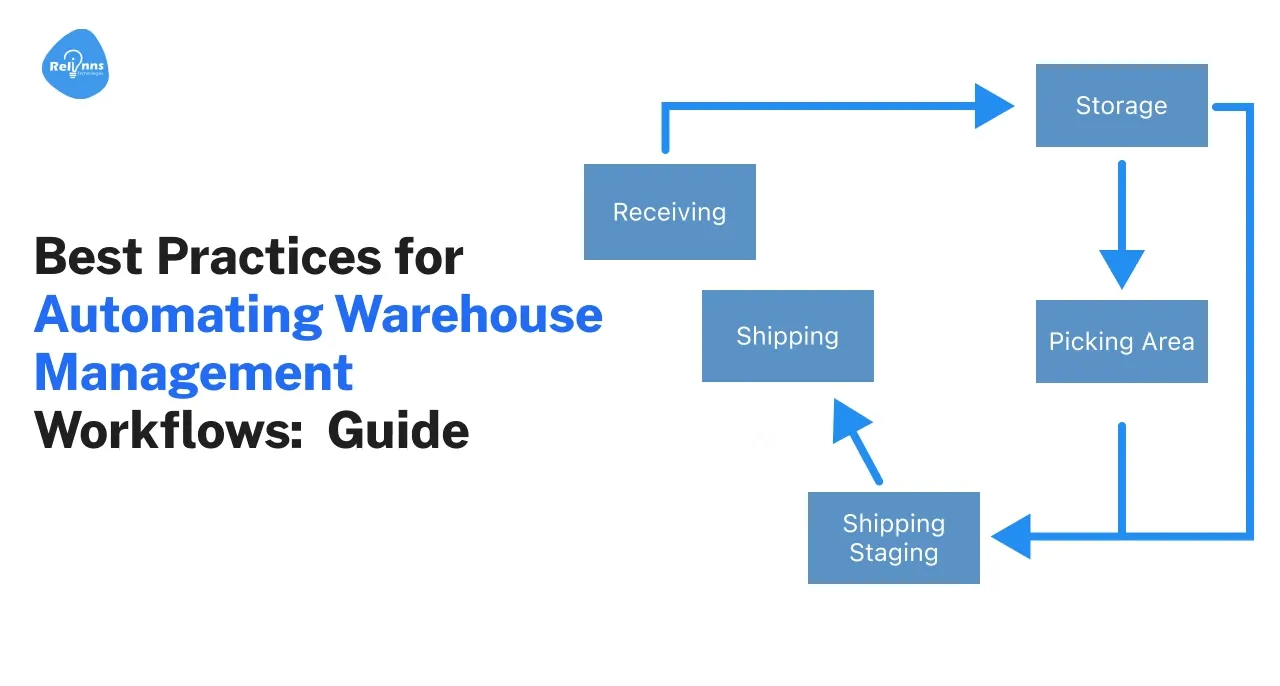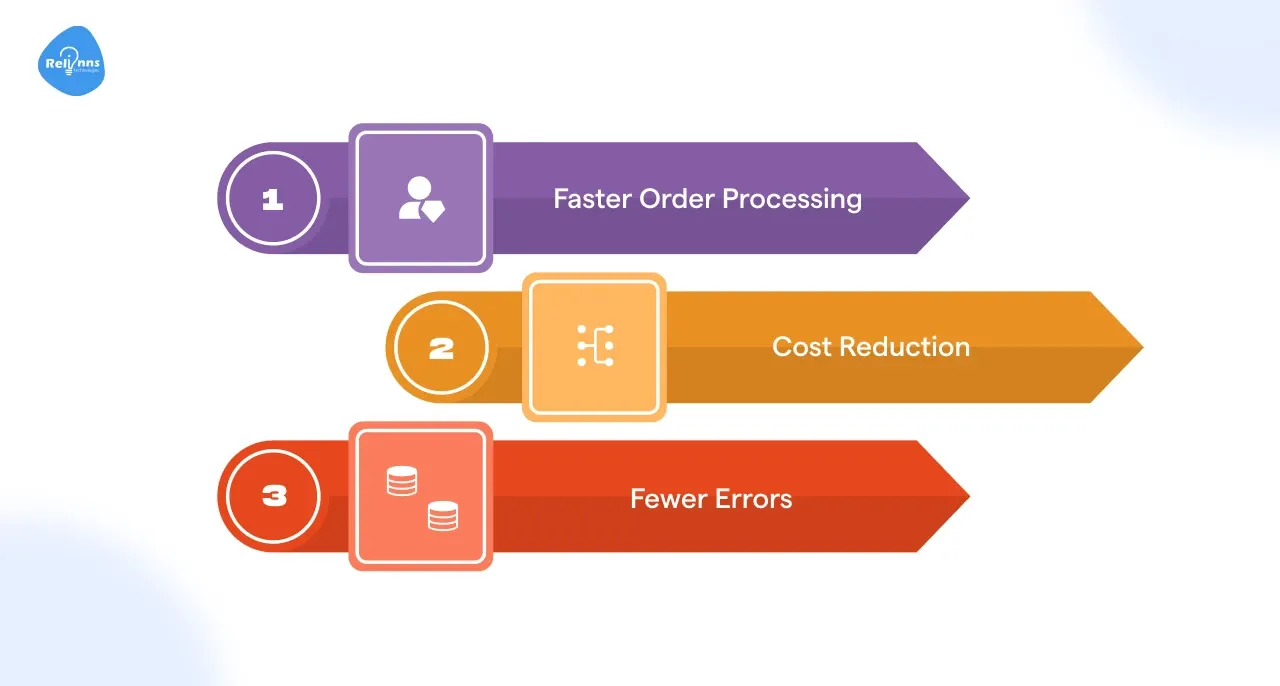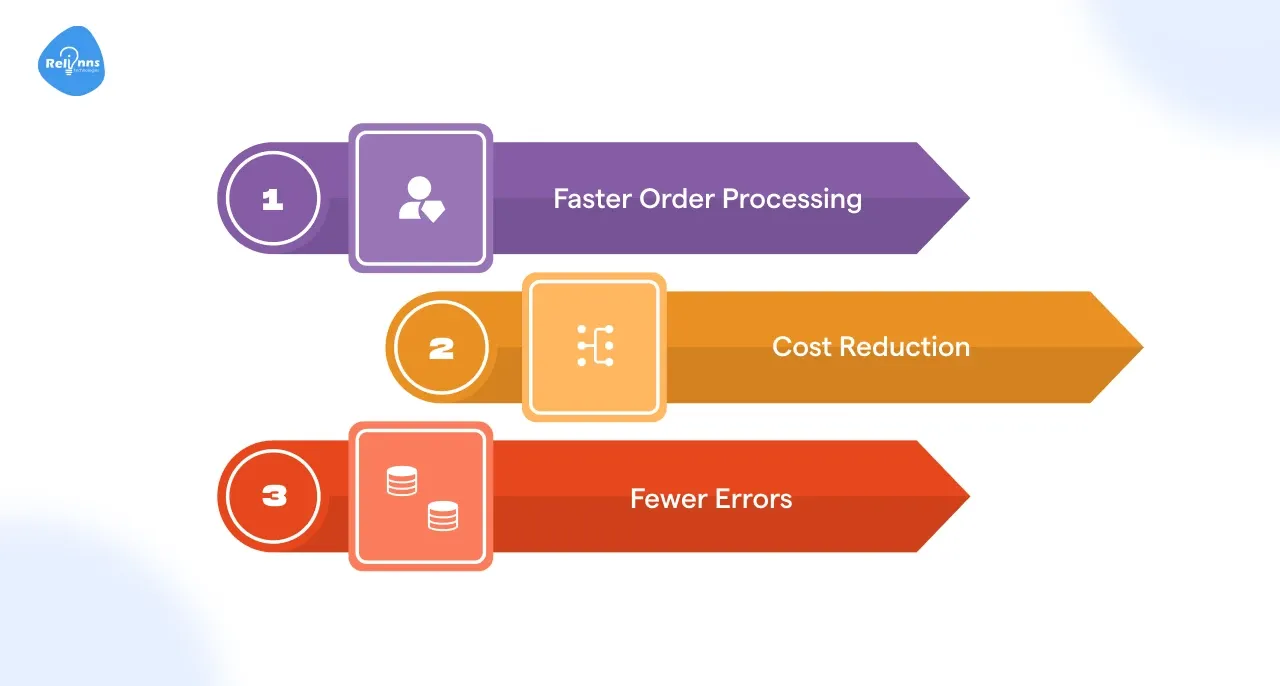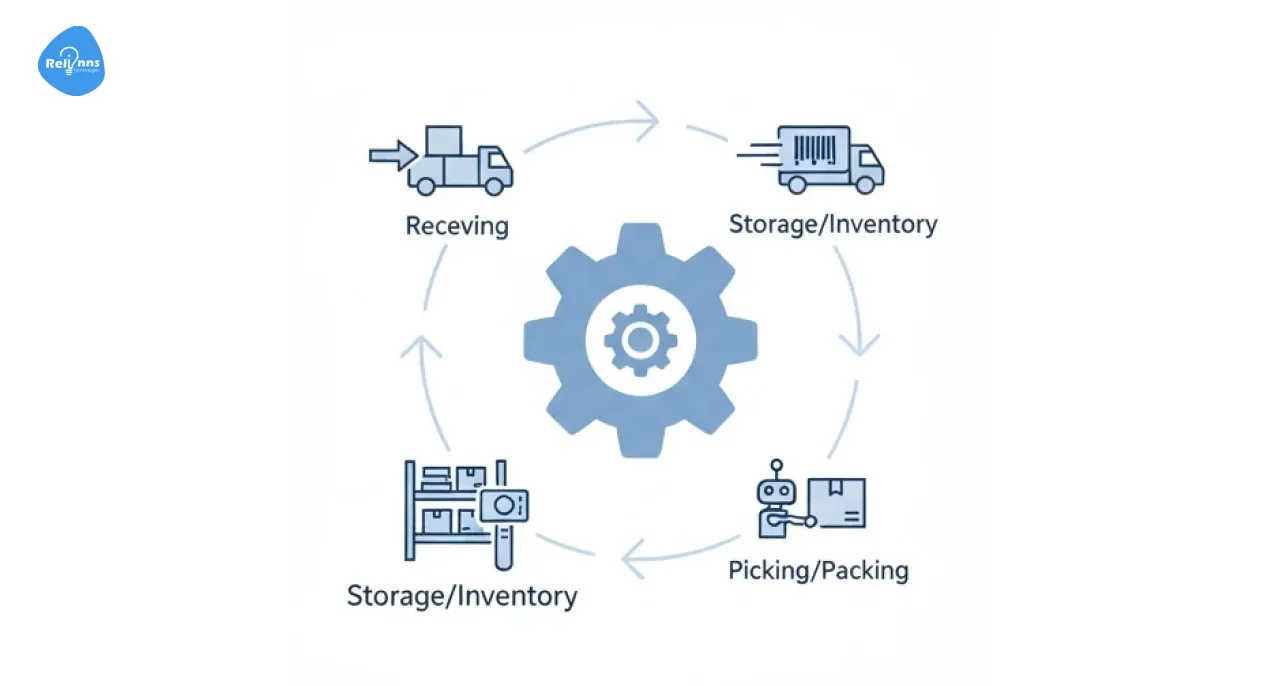Best Practices for Automating Warehouse Management Workflows: 2026 Guide
Date
Nov 10, 25
Reading Time
7 Minutes
Category
Low-Code/No-Code Development

If you’re constantly dealing with delayed orders, inventory inaccuracies, and rising labor costs, your warehouse isn’t broken. It’s just outdated.
Modern warehouses are under pressure to do more with less. Fulfillment must be faster, cheaper, and more accurate.
But legacy processes are holding businesses back, especially when demand spikes. As supply chains become more complex, inefficient manual workflows directly impact profitability and customer satisfaction.
In this guide, we explore the best practices for automating warehouse management workflows. We’ll cover every stage of warehouse operations, address common challenges in warehouse automation, and demonstrate how AI can transform your processes.
We also highlight real-world use cases and a trusted automation platform to help you get started.
Let’s dive in.
What Is Warehouse Workflow Automation?
Warehouse workflow automation involves using technology to streamline manual, repetitive, and error-prone processes within warehouse operations.
From receiving and storage to order fulfillment and returns, automation touches every function. It improves accuracy, reduces cost, and speeds up delivery.
Key Objectives of Warehouse Automation
- Replace repetitive tasks with machines or software.
- Improve real-time inventory visibility
- Eliminate human error in picking, sorting, and data entry
- Reduce turnaround time for inbound and outbound shipments
The goal is to achieve seamless, scalable, and intelligent logistics operations through warehouse automation and AI.
Why Use Warehouse Automation?

Some warehouses struggle with order accuracy. Others battle high employee turnover or inefficient picking systems. No matter the size or scope, every warehouse can benefit from automation.
Here’s why organizations are adopting the best practices for automating warehouse management workflows.
A. Faster Order Processing
Automation drastically reduces the time it takes to fulfill an order. Systems like AS/RS (Automated Storage and Retrieval Systems) can reduce fulfillment times by up to 70%.
B. Cost Reduction
Warehouse automation powered by AI reduces labor dependency and operating costs, especially amid rising wages and limited skilled labor.
C. Fewer Errors
Barcode or RFID scanning, automated weighing, and AI-powered vision systems increase order accuracy and reduce costly returns.
What are the key challenges in warehouse automation?

Before we look at best practices, it's essential to understand the most common warehouse automation challenges businesses face.
A. Labor Shortage and Turnover
Labor is hard to find and expensive to retain. Many warehouses experience turnover rates of over 100% annually, especially during peak seasons.
B. High Upfront Investment
Automation tools like conveyors, robotics, and WMS software often require significant capital investment and planning.
C. Integration Complexities
Many legacy systems can’t easily connect with new warehouse automation AI platforms, making transitions difficult.
D. Resistance to Change
Staff training, tech literacy, and fear of job loss can stall automation initiatives even when the benefits are clear.
Despite these barriers, automation is no longer optional. It is foundational to staying competitive.
Suggested Reading: How to Set Up Joget Warehouse Automation Workflow
Best Practices for Automating Warehouse Management Workflows

Many warehouses today are stuck in reactive mode, constantly putting out fires caused by outdated systems and manual errors.
These inefficiencies lead to delays, mispicks, and mounting operational costs, especially as demand surges.
To overcome these warehouse automation challenges, businesses must adopt the best practices for automating warehouse management workflows using intelligent systems powered by warehouse automation AI.
A. Receiving and Put-away Automation
Your workflows start here.
If the receiving process is manual or error-prone, everything else downstream suffers. Automating this stage ensures accurate inventory and efficient space usage.
- Use RFID or barcode scanning at unloading to capture data immediately.
- Integrate dock scheduling with yard management systems.
- Implement slotting optimization to guide put-away decisions.
B. Real-Time Inventory Visibility
Live visibility ensures better decision-making, demand forecasting, and resource allocation.
A modern WMS integrated with IoT and AI devices for warehouse automation provides this clarity.
- Automate cycle counts with RFID or vision-based tracking.
- Trigger replenishments via AI-led low-stock alerts.
- Track item location across zones, bins, or totes.
C. Order Picking Optimization
This is one of the most labor-intensive areas.
Optimizing picking through automation delivers the highest ROI.
- Deploy AMRs (Autonomous Mobile Robots) for goods-to-person workflows.
- Use voice-directed or pick-to-light systems to guide workers.
- Implement AI to dynamically optimize pick paths in real time.
D. Packing and QA Automation
Packing errors are costly and damage customer trust.
Automating dimension checks and packing flows enhances speed and accuracy.
- Use automated scales and scanners for parcel validation.
- Integrate cartonization software to choose the right box size.
- Include AI-driven visual inspection to reduce returns and automate quality assurance.
E. Shipping and Dispatch Orchestration
Delays at shipping dock doors are a bottleneck.
Automating this workflow smoothens last-mile operations and eliminates many warehouse automation challenges.
- Integrate with carrier APIs for instant label printing and manifest generation.
- Automate load planning and dock assignments based on shipment priority.
- Enable return processing with minimal manual touchpoints.
F. Warehouse Automation AI and Analytics
Data is the new oil, but only if it’s usable.
Warehouse automation AI converts raw data into decisions and insights.
- Use AI to forecast demand and pre-plan stock movement.
- Apply ML models to recommend new storage zones based on pick velocity.
- Detect anomalies and downtime proactively via real-time alerts.
G. Modular System Integration
Avoid automation silos.
Choose systems that support plug-and-play functionality across ERPs, CRMs, and third-party platforms.
- Use RESTful APIs or iPaaS tools to connect warehouse software.
- Centralize data through cloud platforms for unified access.
- Create digital twins to simulate process changes before rollout.
H. Continuous Training and Change Management
The human element matters.
Well-trained staff make or break automation success and prevent friction during transitions.
- Use gamified mobile apps for upskilling frontline workers.
- Enable simulation-based training via VR or AR platforms.
- Regularly review metrics to identify training gaps and optimize warehouse automation workflows.
Suggested Reading: All About Warehouse Management System (WMS).
Real-World Use Cases for Automating Warehouse Management Workflows
Automation strategies are only as good as their real-world execution.
To help you see the value clearly, we’ve gathered success stories from companies that have implemented the best practices for automating warehouse management workflows.
These use cases reflect how businesses overcame warehouse automation challenges and scaled using warehouse automation AI.
A. Relinns – Inventory Automation Across 12 Stores
Problem: A UAE-based retail brand struggled to manage inventory manually across 12 physical locations. They faced inconsistent SKU naming, frequent stockouts, and long replenishment delays. Forecasting was reactive, and data across stores wasn’t unified.
Solution: Relinns Technologies built a low-code warehouse automation solution on Joget DX. The platform unified the SKU database, automated warehouse workflows (receiving, put-away, replenishment), triggered low-stock alerts, and integrated with both ERP and POS systems to maintain real-time inventory visibility.
Results
- 27 % reduction in warehouse inventory holding costs across all stores
- 33 % faster forecasting and replenishment planning cycles
- 22 % decrease in vendor lead time using automated purchase workflows
- 43 % improvement in cycle counting and audit speed with barcode integration
Read more here: Relinns Technologies
B. Toranoana Inc. – Automated Storage and Picking for E-commerce
Problem: Japanese retailer Toranoana faced fulfillment delays due to inefficient manual picking and limited storage density. With rising online orders and limited space, the company struggled to scale operations and maintain delivery standards.
Solution: The retailer deployed an AutoStore AS/RS (Automated Storage and Retrieval System) integrated with robotics to automate high-density storage and goods-to-person picking. This improved throughput, reduced floor space usage, and enabled continuous operations with minimal human intervention.
Results
- 70 % higher order picking speed after automation
- 40 % reduction in warehouse space required
- 35 % increase in daily fulfillment volume with 24/7 robot operations
Read more here: AutoStore Case Studies
C. DSV Panalpina – Robotic Fulfillment in Global 3PL Warehouses
Problem: DSV, a global logistics leader, needed to handle growing e-commerce volumes while controlling labor costs and maintaining high order accuracy. Manual picking workflows could not scale efficiently, and warehouse automation challenges became a limiting factor.
Solution: DSV adopted Locus Robotics’ AI-powered goods-to-person robot fleet. The warehouse automation AI platform streamlined picking and route optimization while minimizing training overhead for new workers through intuitive interfaces.
Results
- 30 % increase in order throughput at multiple warehouse sites
- 25 % reduction in picking errors across robotic zones
- 20 % decrease in labor cost per fulfilled order
Read more here: DSV x Locus Robotics Case Study
Conclusion: Implementing the Best Practices for Automating Warehouse Management Workflows
Warehousing today is no longer about managing shelves. It’s about enabling intelligent, responsive, and connected logistics environments that scale on demand.
The organizations adopting best practices for automating warehouse management workflows are not just improving speed and accuracy; they’re creating a competitive advantage.
If you're looking for a trusted partner to help you automate with confidence, Relinns Technologies is a proven leader in warehouse digitization.
They specialize in delivering low-code, scalable AI solutions for warehouse automation tailored to each business’s needs.
Why Choose Relinns?
Relinns combines industry experience with powerful platforms like Joget DX to deliver high-impact automation that grows with your business.
Whether you're managing inventory across multiple locations or integrating AI into your fulfillment workflow, Relinns helps you go from manual to modern, faster.
- 40% faster deployment of custom warehouse automation apps
- 27% average reduction in inventory holding costs across multi-store clients
- 33% improvement in demand forecasting cycle times
- 99% data accuracy maintained through integrated barcode and RFID automation
Explore how Relinns can accelerate your warehouse automation journey.
Frequently Asked Questions (FAQ's)
How can small warehouses adopt automation with limited budgets?
Even with tight budgets, small warehouses can begin with modular systems like barcode automation, cloud-based WMS, or affordable warehouse automation AI tools that scale as needs grow.
What industries benefit most from warehouse automation AI today?
Industries like retail, e-commerce, pharmaceuticals, and manufacturing benefit significantly from fast-moving inventory, compliance requirements, and high order volumes that require optimized warehouse management workflows.
Are there risks in automating only part of the warehouse workflow?
Yes, partial automation may cause bottlenecks, misalignment, or data silos. Following best practices for automating warehouse management workflows ensures end-to-end efficiency and system cohesion.
What role does warehouse automation AI play in predictive maintenance?
Warehouse automation AI monitors equipment usage, predicts failures, and schedules preventive maintenance to reduce downtime and extend asset life in robotics and conveyor systems.
How do automated workflows improve sustainability in warehousing?
By reducing paper usage, minimizing waste, optimizing energy, and using AI to avoid overstocking, automation supports eco-friendly operations and sustainable warehouse management practices.


